
The Renaissance of Rammed Earth with David Easton (video 30 minutes), offers complete construction information, and interviews with people who live in these solid walled homes.

Architecture, Art, Design, and Culture using of mud, clay, soil, dirt & dust.

The Renaissance of Rammed Earth with David Easton (video 30 minutes), offers complete construction information, and interviews with people who live in these solid walled homes.

An Architecture for People: The Complete Works of Hassan Fathy reviews the ideas and designs of Egyptian architect Hassan Fathy (1900-1989), best known for his striking Architecture for the Poor (University of Chicago, 1973), which described his efforts to create the village of New Gourna for 7,000 displaced Egyptian peasants known as the Gourni. Fathy sought to empathize with their lifeworld and to find architectural means whereby the new village would sustain their traditional way of life yet at the same time make life better by drawing on sustainable technology.
Steele, an architect himself, presents Fathy’s built projects and discusses the design philosophy underlying his work. Steele’s book is a tribute to Fathy as a compassionate designer and as a master craftsman who held strongly to traditional values and beliefs at a time when the historical amnesia and standardization of Modernist architecture dominated.
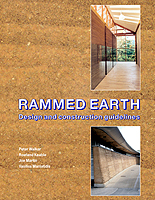
Rammed Earth: Design and Construction Guidelines by Peter Walker and BRE promotes the use of rammed earth wall construction in the UK as a high-quality and sustainable building technology. In one book it gives detailed practical guidance on architectural details, structural engineering recommendations, material selection, construction and maintenance of rammed earth.
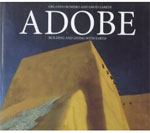
Adobe: Building and Living With Earth by Orlando Romero and David Larkin, is a picture-rich study of the history, technology, and dignified, sculptural beauty of adobe structures. The oldest of building materials, adobe bricks are made from mud and straw and have been used in Africa, the Iberian peninsula, and all across the Southwest and Mexico. Surprisingly durable if maintained, adobe constructions can last for centuries. Romero and Larkin explain brick-making and remudding techniques, showing both archival photographs of Native Americans at work on their pueblos and photographs of contemporary builders. They also document some of the Southwest’s most famous adobe churches and pueblos, such as the San Francisco Mission Church at Ranchos de Taos and the wondrous mesa-crowning Acoma Pueblo, as well as a selection of lesser-known buildings. Special attention is paid to interior decorative detail and to adobe’s intrinsic connection to the landscape.
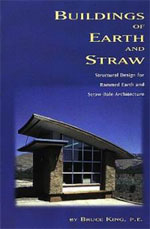
Buildings of Earth and Straw: Structural Design for Rammed Earth and Straw Bale Architecture by Bruce King chronicles the possibilities and realities of straw bale and rammed earth construction. Buildings of Earth and Straw fills in the gaps for professional builders, contractors, engineers, inspectors, lenders, and architectural students. It includes special construction requirements of earth and straw, design capabilities and limitations of these materials, and documentation of testing data for use in addressing the concerns of officials. This book offers the nuts and bolts of rammed earth and straw bale building techniques, and why they are so spectacular, durable, and earth-friendly.
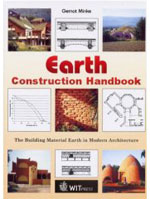
The Earth Construction Handbook by Gernot Minke provides a survey of applications and construction techniques, including physical data, and explains the materials specific qualities together with the possibilities of optimising these. The information given can be practically applied by engineers, architects, builders, planners, craftsmen and laymen who wish to construct cost-effective buildings which provide a healthy, balanced indoor climate.
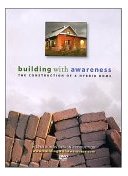
Building With Awareness: The Construction of a Hybrid Home is “the most comprehensive video ever made on the design and construction of a green home” in New Mexico. The DVD contains contains a 2 hr. 45 min. video which contains information on adobe construction and earthen plasters. Watch quicktime trailers of the DVD.

American Adobes by Beverly Spears documents the rich and distictly Northern New Mexican vernacular house.

Arquitectura de Tierra Cruda en Venezuela contains 257 color and 24 black and white illustrations discusses the use of earthen architecture in Venezuela from the pre-columbian period to today. Spanish language edition only.
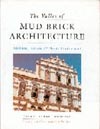
The Valley of Mud-Brick Architecture by Salma Samar Damluji is a scholarly book concentrating on the architecture and town planning of two towns in the Hadhramawt, Shibam and Tarim, Yemen. It looks at the very ancient origins of the south Arabian mud built architecture, its suitability for the climate, its adaptability, and its relative virtues compared with imported Western practices and how it can continue to develop as an indigenous Arabian art or science. It is clearly an exciting study to any such as Dr. Damluji, who had worked with and is clearly an admirer of Hassan Fathy, the great exponent of traditional mud brick architecture in Cairo. Read a review.